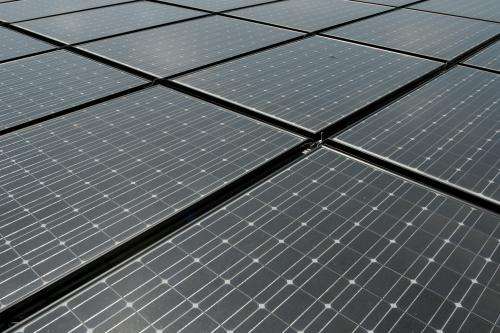February 25, 2015 weblog
Europe's electricity operators prepare for March solar eclipse

Imagine: An entire UK plunged into darkness. Narrative for a science fiction trailer? Not at all. In parts of Europe, said Mirror Online, almost 90 per cent of the sun's rays will be blocked.
On March 20, a solar eclipse will cover up to 80 percent of the sun in Germany, said Clean Energy Wire. Some parts of Scotland will see 94 percent darkness. This will be the biggest solar eclipse since 1999. The moon will cover the sun in the morning hours of Friday, March 20. Timing of the eclipse puts pressure on electricity providers, said The Independent. It all happens at rush hour and as day workers start up. Mirror Online said, "The blackout will begin in the UK at 8.45am and the maximum eclipse, when the moon is nearest the middle of the sun, will be at 9.31am." The blackout ends at 10:41.
Overall, in Europe, could next month's eclipse disrupt Europe's power supplies? Actually, European transmission system operators have been preparing for the March event for several months, evaluating and attempting to mitigate risks. The European Network of Transmission System Operators for Electricity (ENTSO-E) on Monday carried this headline on its website: "20 March Solar Eclipse: An Unprecedented Test for Europe's Electricity System." This is the group that represents 41 electricity transmission system operators from 34 countries across Europe. They stated that "Under a clear morning sky on 20 March 2015, some 35,000 MW of solar energy, which is the equivalent of nearly 80 medium size conventional generation units, will gradually fade from Europe's electrical system before being gradually re-injected: all in the space of two hours while Europeans and their offices begin a normal working week day."
The eclipse carries a new challenge compared to the eclipse of 1999, namely use of solar energy. Back then, only 0.1 percent of the renewable energy supply came from solar. A number of countries now use solar energy; 10.5 percent of the green energy in Europe comes from such sources. It's the increase in solar power across the continent's interconnected grids post-1999 that has system operators paying more attention to the March 20 date. ENTSO-E said in its Monday statement, "Solar eclipses have happened before but with the increase of installed photovoltaic energy generation, the risk of an incident could be serious without appropriate countermeasures."
Transmission systems operators have a cooperative plan; control rooms will control scheduled actions across Europe ahead of and during the eclipse. The Financial Times quoted ENTSO-E spokesperson Claire Camus: "It will have a cascading effect," she said. Countries would draw on each other's reserves of electricity in turn, as the path of the eclipse cuts solar power at faster rates than under natural conditions.
ENTSO-E said it planned to continue communications on the eclipse as the day draws near and beyond. Pilita Clark's Monday story about the eclipse in the Financial Times carried remarks from Patrick Graichen, executive director of Agora Energiewende. He said the eclipse was unlikely to cause problems because (1) there had been time to plan for the event and (2) several ways to balance power supplies are well known. At the same time, he said, the March 20 event bears significance as a stress test: How flexible is the European power system? "Within 30 minutes the solar power production would decrease from 17.5 gigawatts to 6.2GW and then increase again up to 24.6GW. This means that within 30 minutes the system will have to adapt to a load change of -10GW to +15GW," he said in Clark's story. By 2030, as more renewable energy comes on stream, this type of shift is expected to become more common, and in a way March 20, he said, offered a glimpse into the future of our power systems.
© 2015 Tech Xplore



















